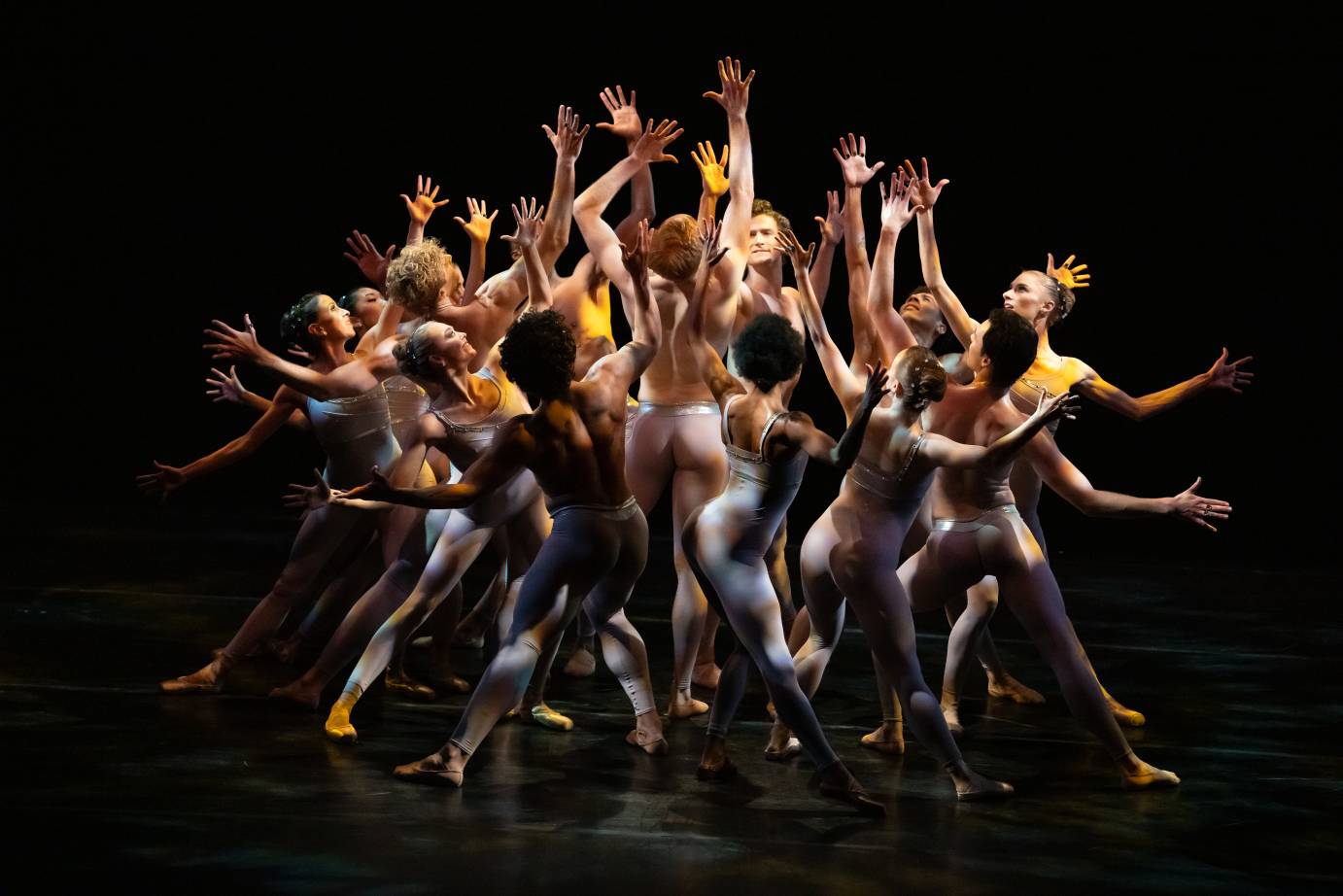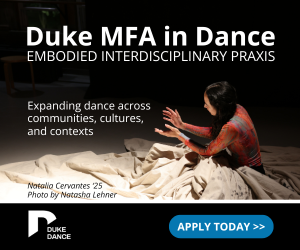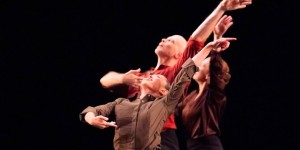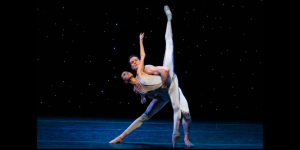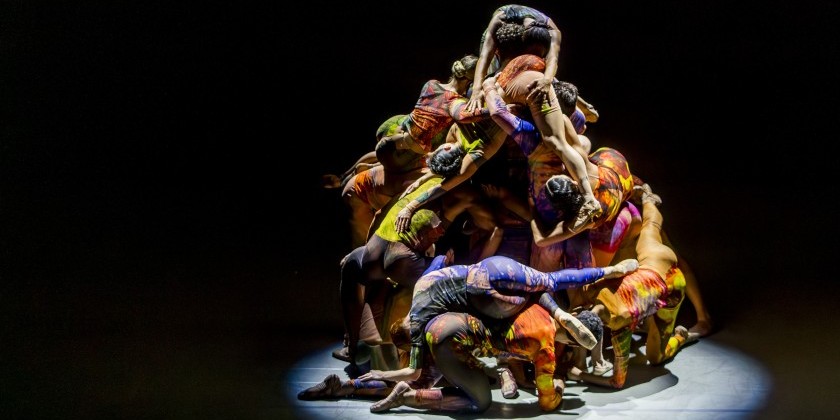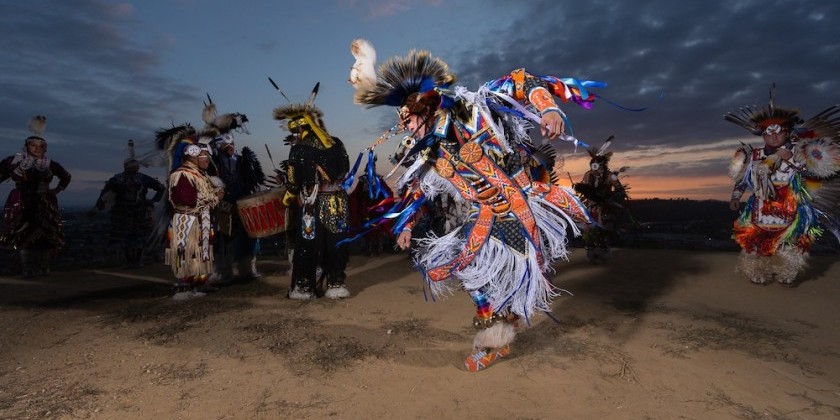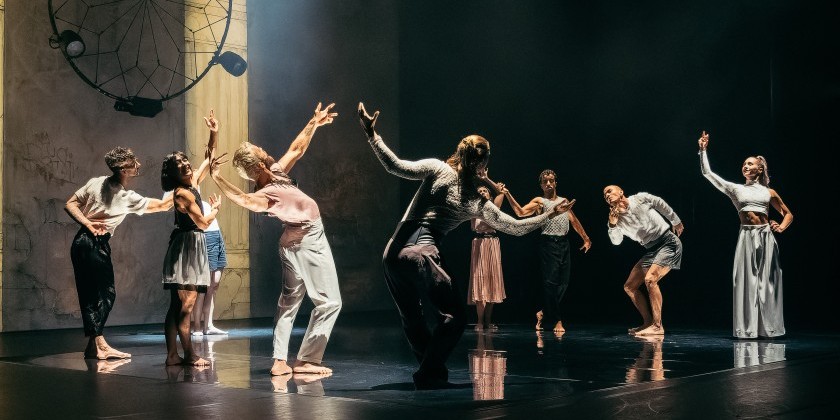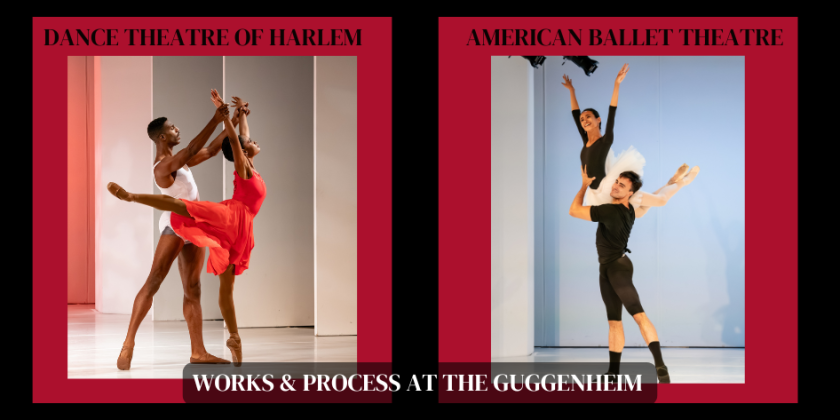IMPRESSIONS: Arpino Dance Festival (Week Two), A Tribute to Gerald Arpino, One of Ballet’s Most Visionary Architects of Dance, at the Joyce Theater

Arpino Dance Festival
A Tribute to Gerald Arpino, One of Ballet’s Most Visionary Architects of Dance
The Joyce Theater
September 30–October 12, 2025
Week 2: October 7 – October 12
For full credits: Click the Link to The Joyce Arpino Program here
When legendary dance composition teacher Doris Rudko received the Martha Hill Lifetime Achievement Award in 2004, she selected choreographer Gerald Arpino to introduce her. No wonder, for Arpino knew both how to put dances together and how to entertain an audience.
A two-week dance festival at New York City’s Joyce Theater celebrated this American master, who was a founding member of The Joffrey Ballet, became its co-director, and - after the death of Robert Joffrey in 1988 - helmed the company until a year before his own passing in 2008. Although the Joffrey Ballet had moved to Chicago in 1995, Arpino, who was born on Staten Island, remained a true New Yorker with a global outlook. For many years, he kept a house with his archives in San Francisco; and his sophistication and artistry gained an international flair.
Seeing Program 2 on the last day of the festival made me regret not having been able to go multiple times, and not having caught the first program, which my colleague Robert Johnson reviewed. (Click here for Robert Johnson's review of Arpino Dance Festival Week One.)
Sitting among other exalted audience members, a feeling of grief about the Lincoln Kirstein-induced, long-lasting monoculture in New York City’s ballet scene came over me. What a gift to experience at least a glimpse of Arpino’s oeuvre that, even in one afternoon, showed a wide range of movement vocabulary. Here is a choreographer who employs the classical ballet lexicon playfully in joyful variations, and - in Light Rain - courageously drops the dancers’ center of gravity infusing it with a marvelous sex appeal.
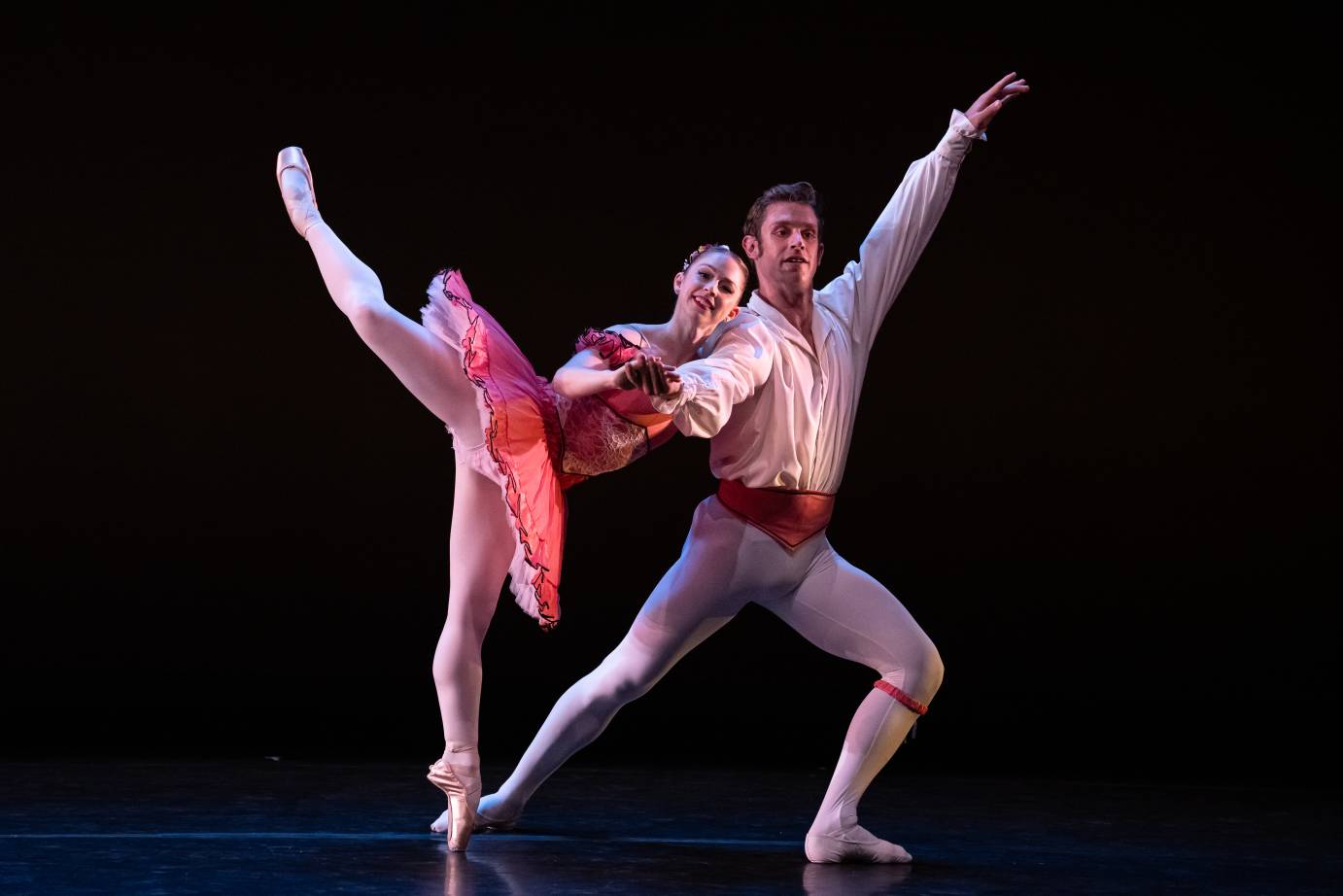
The afternoon’s journey starts with a seemingly traditional ballet, Confetti, originally created for The Joffrey Ballet in 1970 to music by Gioacchino Rossini, and revived by Emily Speed’s company, Artistic Ventures in Dance, earlier this year. Partners Madeline Bez and Thomas Caleb Roberts, Sara Jumper and Elias Re, as well as Lilit Hogtanian and Julian Goodwin Ferris, beat their legs and feet briskly in cabrioles and entrechats. Arpino presents his batterie-filled ballet with a wink. Though beats are usually the hallmark of petit allegro, here the women beat their legs even in a slow-tilted lift. My notes contain a smiley face. Distinguished by differently colored dresses, the ballerinas spread cheer in their varying solos: yellow, - who sports an impressively flexible back -, ends with a lickety-split manège; green forever hops en pointe; and pink turns with a tambourine. Color-matching cummerbunds around the men’s waists let the partners find one another in their multiple crossings. Many an entrance and exit give the performers moments to breathe, before they ignite the next fireworks on stage. Exuberant fish dives bring Confetti to a festive close in this bright staging by Douglas Martin.

Among Arpino’s collaborations with composer Jacob Druckman, Valentine (1971), a boxing pas de deux for a male/female couple accompanied by a double bass, is the one most frequently performed. Dressed as a referee, the musician Kebra-Seyoun Charles keenly observes the fighters, and reacts to their every move. Emily Speed and Fabrice Calmels enter clad in robes embossed with their last names. Ready to fight, they shed the extra gear and reveal their red, black, and golden outfits. At one point, the very tall Calmels holds Speed’s head at his considerably long arm’s length. Her desperate attempt to land a punch has the audience laughing. Staged by Meg Paul for these mighty contenders, the choreography boasts plenty of humor through its physicality alone. Speed’s acting might overdo it at times, but her dancing is spot on. After a prolonged headstand, she ever so calmly relishes walking backward along Calmels’s infinite spine, before she triumphantly emerges upright. Is it a winner’s scream, or a loser’s howl that bursts from her lungs? Calmels poses as a champion, displaying sculptural beauty along with wit in his phrasing. At the end, the two collapse on top of each other. Charles, eyeing the action closely, topples over with his instrument. Now, I would like to see the other Arpino/Druckman works.
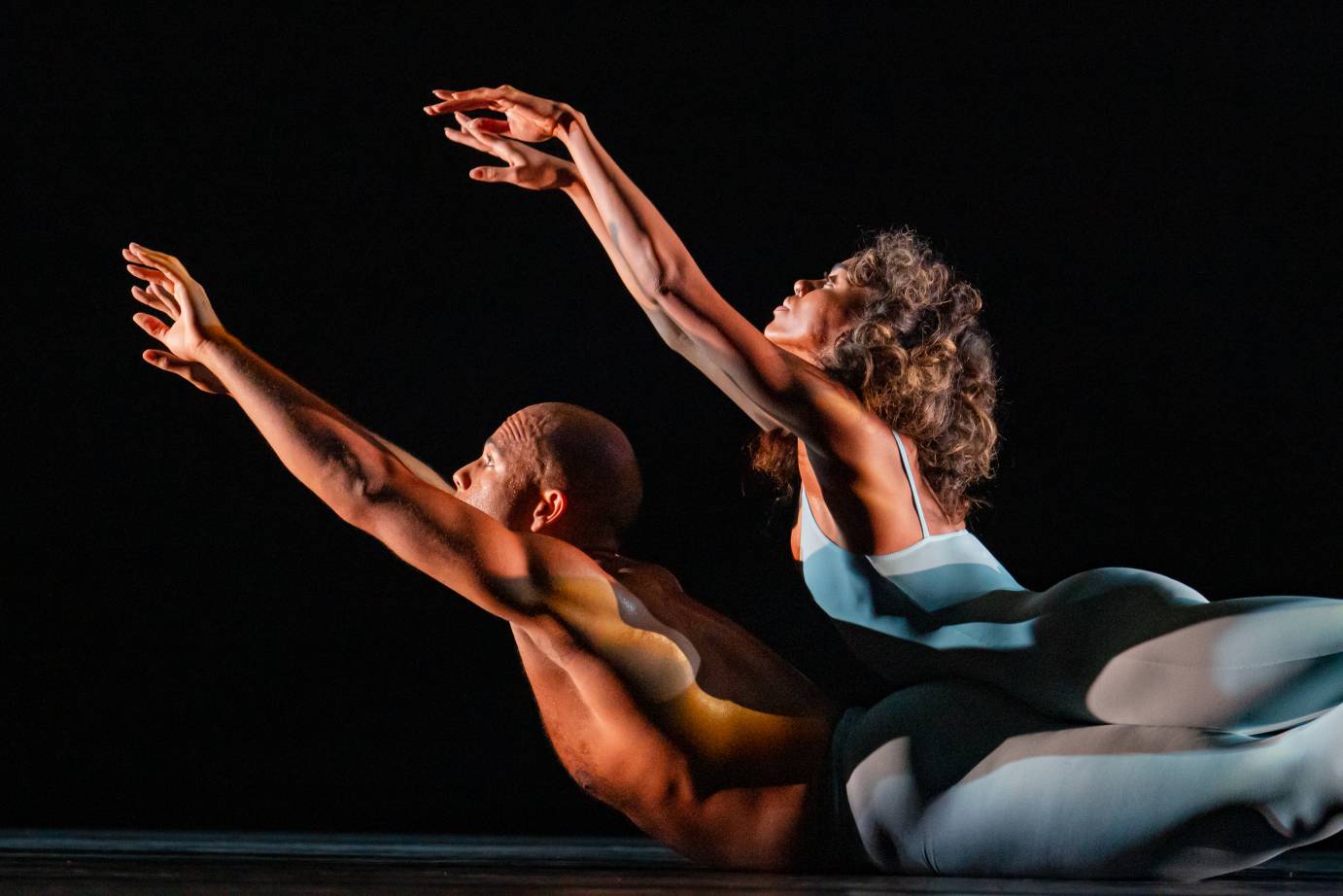
The poetic pas de deux Sea Shadow (1962), to the Second Movement (Adagio Assai) of composer Maurice Ravel’s Concerto in G for Piano and Orchestra, could be interpreted as a man’s dream of a sea creature coming ashore. Described as a romantic ode to Ondine, the ballet bears all the ingredients of a truly beautiful, sinuous encounter in which the protagonists discover undulating pleasures. Dance Theatre of Harlem's Kamala Saara and Kouadio Davis do not always seem to understand the poetic idea of their union, however. Soon after she appears bouréeing from behind a rock, Saara breaks the dreamlike reverie a few times by staring seductively at the audience; and Davis repeatedly cuts short the arc of a phrase by taking a couple of steps as a muscle-bound pedestrian. Yet, despite the performers’ limitations, the duet nevertheless shows the possibilities that Arpino must have had in mind. Instead of being addressed, I would have loved to be a bystander witnessing this magic encounter as if by chance. I wished these dancers possessed a heightened awareness of their bodies inside and out (both proprioception and interoception) - to honor what I believe to be the choreographer’s intent. Nonetheless, the couple’s gymnastic prowess and their faultless partnering impressed the audience.
The original lighting design by Thomas Skelton, original costume design by A. Christina Giannini, recreated here by Rebecca Shouse, and a set after the original by Ming Cho Lee (courtesy of The Joffrey Ballet), make Sea Shadow a marvel well worth revisiting. Notably another New York choreographer, Jerome Robbins, rendezvoused with Ravel’s score for his 1975 In G Major. I would be grateful for the opportunity to watch Arpino’s delightful, introspective ode as often as I get to see Robbins’s homage to Art Deco. https://www.dance-enthusiast.com/features/impressions-reviews/view/New-York-City-Ballet-Ravel-Spring-Season-
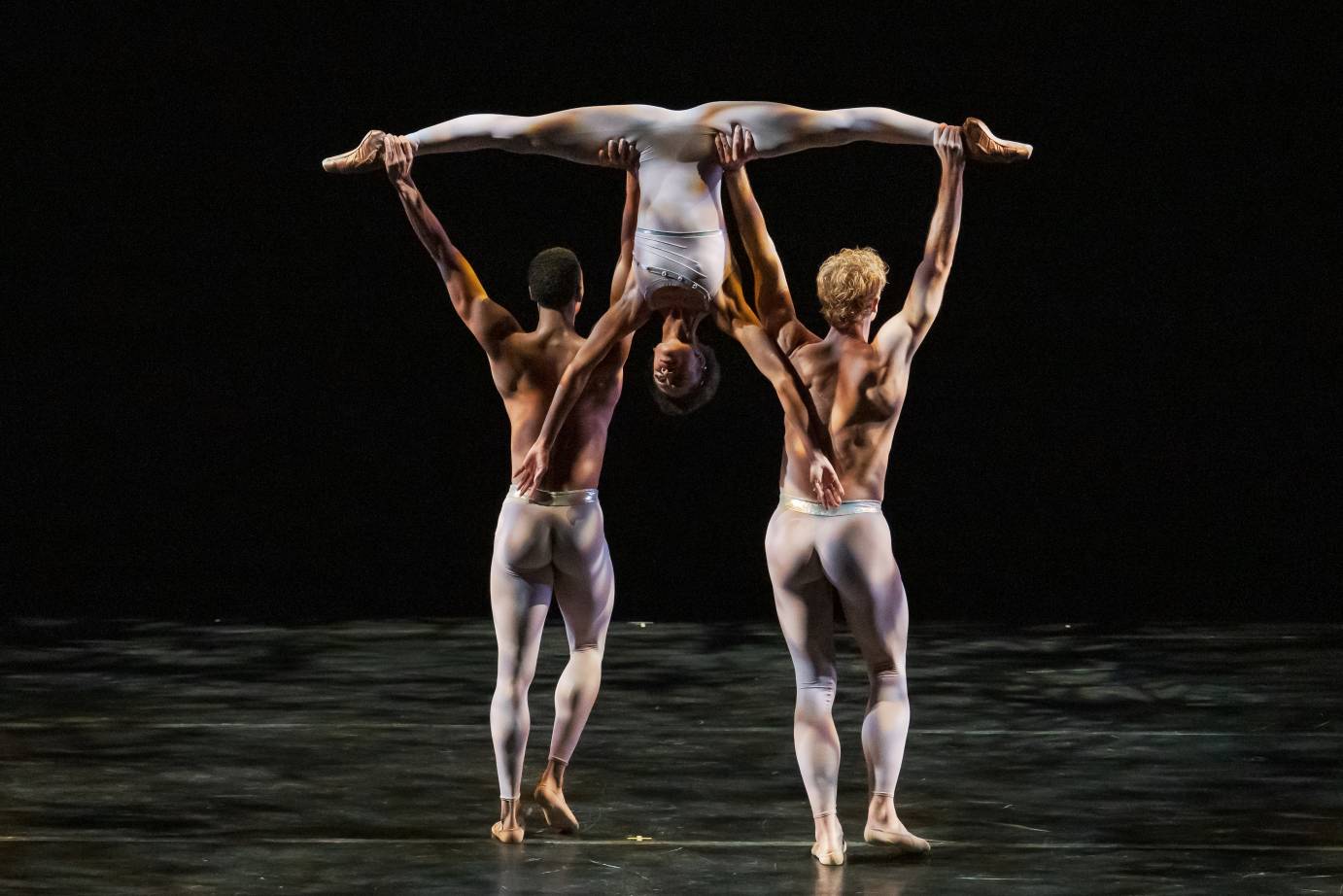
Arpino celebrates a new generation with his body-positive Light Rain. A fusion score by Douglas Adams and Russ Gauthier features Eastern-style music on Western instruments, and suggests a psychedelic, happy groove. A cluster of dancers sparkles in the light and as the piece had its premiere in 1981, the moving shards of luminescence bring to mind the effects of a disco ball. A trio section in which two men support a woman between them, I read as a light-hearted parody of Frederick Ashton’s Monotones. The fabulous Katlyn Addison performs an upside-down split held aloft, and slithers back upright with an infectious smile. Everyone is invited to this party! Hips lead the way in ever-changing group patterns. One section reveals a soloist as the group changes level. Then another soloist peels off, and yet another catapults through the crowd. Unpredictable formations and surprising lifts throughout have me dancing in my seat. In the culminating duet, Addison thrusts her pelvis forward and her head back as Hadriel Diniz partners her with verve. All 14 fabulous dancers from Ballet West seem to relish performing this winning showpiece. What a great company; and what a wonderful finale to a festival celebrating an important choreographer!
